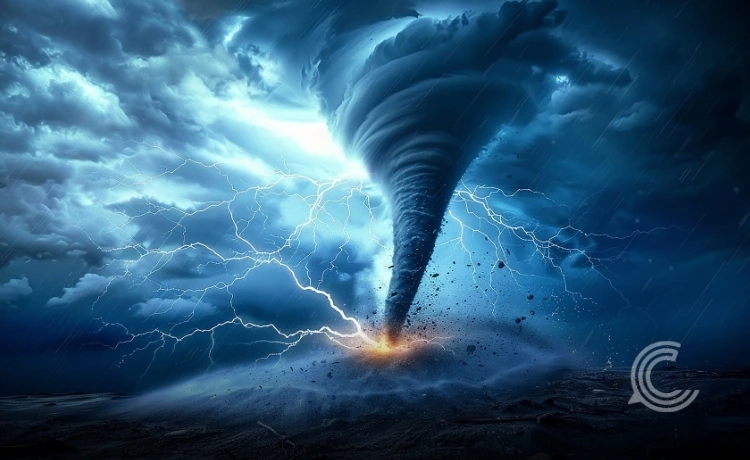Hurricane Melissa, Jamaica’s Strongest Ever Storm, Eyes Cuba After Devastating Landfall

Key Highlights–
- Category 5 Hurricane Melissa ravages Jamaica with record 185 mph winds before moving toward Cuba.
- Over half a million Jamaicans lose power, government declares a national disaster.
- Experts link the storm’s rapid intensification to ocean warming and climate change.
Record-breaking Hurricane Melissa slammed into Jamaica this week as a Category 5 monster, unleashing 185 mph winds, torrential rain, and catastrophic flooding. The storm, described by the World Meteorological Organization as “the storm of the century,” has since weakened slightly to Category 4 and is barreling toward Cuba, threatening its second-largest city, Santiago de Cuba.
Jamaica Faces Its Strongest Storm in History
According to the US National Hurricane Center (NHC), Hurricane Melissa will “remain a powerful hurricane as it moves across Cuba, the Bahamas, and near Bermuda.” Cuban President Miguel Díaz-Canel warned citizens of “a very difficult night” ahead, urging them to stay in shelters and avoid returning home prematurely.
Widespread Devastation Across Jamaica
Jamaica’s Minister of Local Government, Desmond McKenzie, called the storm “one of the worst experiences Jamaica has ever encountered.” He confirmed that over 530,000 people were without electricity and more than 15,000 residents were seeking safety in storm shelters.
Hurricane Melissa went from a Category 3 storm to a Category 5 and the most intense Atlantic hurricane of 2025 in a matter of days as it approached Jamaica. pic.twitter.com/x9WNF153xE
— AccuWeather (@accuweather) October 28, 2025
Entire parishes such as St Elizabeth, known as Jamaica’s agricultural “breadbasket,” were reported to be underwater. “Our infrastructure has been severely compromised,” McKenzie said at a press briefing, adding that Clarendon and Manchester were also facing extreme damage and flooding.
Prime Minister Andrew Holness declared the Caribbean island a disaster area following extensive destruction from landslides, road collapses, and submerged farmlands. “There is no infrastructure in the region that can withstand a Category 5,” Holness said, adding that the key challenge now was “the speed of recovery.”
Scenes of Chaos and Desperation
Videos and images published by the Jamaica Observer showed entire roads turned into rivers, downed power lines, and homes stripped of roofs. In Portmore, resident Colin Bogle told reporters he was awoken by “a loud explosion and everything went dark.”
Another resident, Emma Simms, described how she prepared a makeshift shelter for her young children. “If things sound like the house isn’t going to hold up, we’ll go in there, stick a mattress on top of us, and wait it out,” she said.
Meteorologist Matthew Cappucci, who flew through the Hurricane Melissa storm’s eye, described the experience as “scientifically stunning and horrifying from a humanitarian standpoint.” He warned that “millions could awaken to devastation, shattered communities and scarring that will take decades to mend.”
Storm Surge, Death Toll, and Climate Link
The NHC warned of a life-threatening storm surge of up to 13 feet along Jamaica’s southern coast. Hospitals near the shoreline were moving patients to upper floors, according to Health Minister Christopher Tufton. Early reports suggest at least seven deaths have occurred across the Caribbean: three in Jamaica, three in Haiti, and one in the Dominican Republic.
Experts have drawn links between Hurricane Melissa’s rapid intensification, its winds doubling from 70 mph to 140 mph in just a day, and rising ocean temperatures. Dr Leanne Archer of the University of Bristol told Reuters that “a warmer ocean means more energy and more strength, while more moisture in the atmosphere means heavier rainfall.”
Climate analysts noted that the world’s oceans reached their warmest levels on record last year, fueling stronger and faster-forming hurricanes.
Cuba, Bahamas Brace for Impact
By Wednesday, Hurricane Melissa is expected to cross Cuba and the Bahamas, maintaining destructive strength. The Cuban government said over 500,000 people had already been evacuated, and international aid groups like the UN’s International Organization for Migration are mobilizing supplies, including solar lamps, blankets, and generators, from their logistics hub in Barbados.
Also Read | Nearly 10% of Amazon’s Corporate Staff Face Layoffs, Surpassing 2022 Total
The US military has reportedly relocated assets out of the storm’s path, underscoring the system’s exceptional scale. As forecasters warn of prolonged flooding and infrastructure collapse, both nations brace for what could become one of the most destructive Atlantic hurricanes on record.



